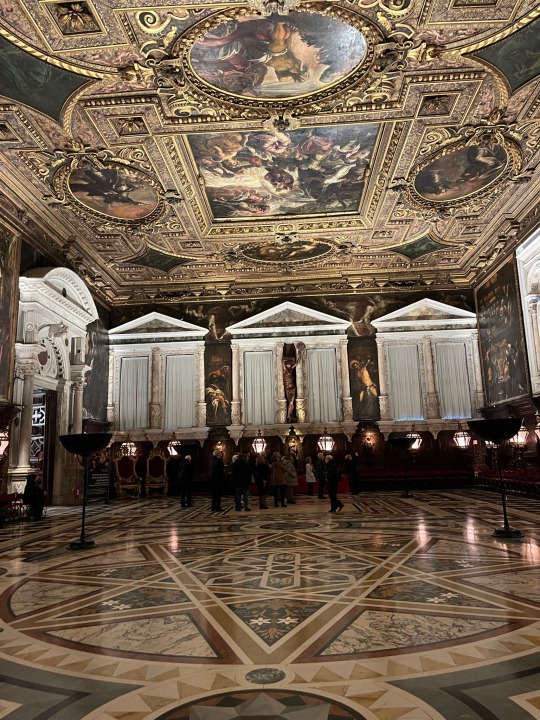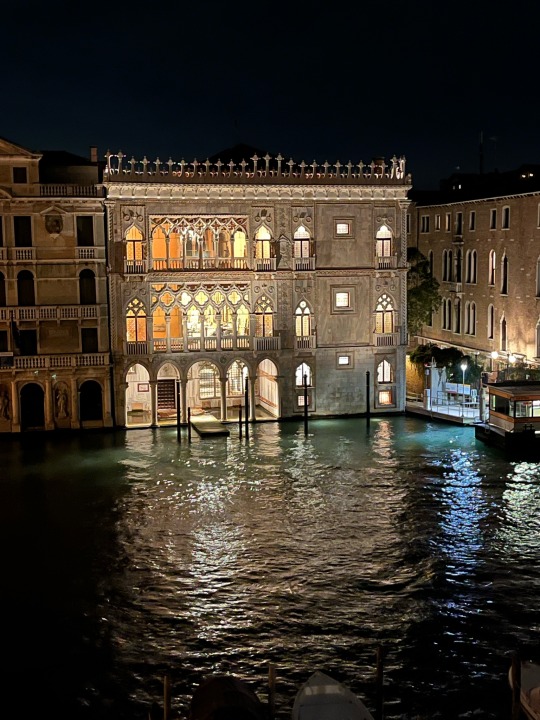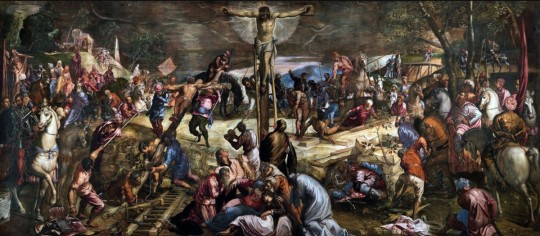#scuola san rocco
Explore tagged Tumblr posts
Text




Scuola grande San Rocco Venezia
145 notes
·
View notes
Text
via Gridllr.com — 4000 Likes, no problem!

Scuola di San Rocco painted by John Singer Sargent (1856 - 1925)
#art#art history#artwork#culture#curators#history#impressionism#painting#vintage#museums#john singer sargent#Scuola di San Rocco painted#John Singer Sargent#1856#1925
748 notes
·
View notes
Text

-Scuola di San Rocco-
62 notes
·
View notes
Text

Day 131: Scuola Grande di San Rocco | Daily Venice for you!
#Venezia#Venice#Italia#Italy#art#Architecture#history#Travel Photography#water#bridge#river#photo#sky#old city#cityscpae#squares#murano#Burano#urban travel#photography#tarvel#Tourism#spring#summer#Europe#venetian carnival#travel#nature#landscape#city
29 notes
·
View notes
Text
This wooden statue in the Scuola Grande di San Rocco that looks SO MUCH like Crowley/David Tennant???


LIKE WHAT
TELL ME YALL SEE IT TOO
17 notes
·
View notes
Text

"Made in Italy… Tod’s host a party the way that only Italians can. Serenaded by @andreabocelliofficial in the Scuola di San Rocco, surrounded by Tintoretto and Tiziano paintings, in one of the most beautiful cities on earth. Thank you Diego and Andrea Della Valle, and the amazing @tods family for your attention to detail, as always. What a spectacular evening to start this visit to the 60th Biennale 💚🤍❤️ Styled by @rosefordestudio hair by @bjornkrischker makeup by @jennycoombsmakeup earrings @tabayer"
6 notes
·
View notes
Text
The Scuola Grande di San Rocco needs a jumpscare warning for Cicero, I was not prepared to look over and see him staring into my soul:

4 notes
·
View notes
Text

ANDREA DA MURANO Pittore italiano, scuola veneziana (noto 1462-1502) Polittico C. 1478 Tempera su tavola, 152 x 88 cm (centro), 152 x 47 cm (lati), 80 x 199 cm (lunetta) Gallerie dell'Accademia, Venezia A differenza di Bartolomeo Vivarini, le prime opere di Andrea da Murano mostrano la pienezza della forma scultorea e la chiarezza della struttura spaziale che notiamo nelle opere di Giovanni Bellini. Il suo capolavoro di questo periodo è il polittico, originariamente nella chiesa di San Pietro Martire di Murano. Sebbene concepito secondo la tradizionale suddivisione in scomparti, con San Vincenzo Ferrer e San Rocco al centro, San Sebastiano a sinistra, San Pietro Martire a destra e nella lunetta la Madonna della Misericordia con San Ludovico, San Domenico, San Bernardino e Santa Caterina, il palinsesto acquisisce una completezza di visione attraverso la sua sicura padronanza della prospettiva. Padroni dello spazio in cui si trovano naturalmente sul fondo dorato, le figure hanno sia una qualità scultorea che spirituale. Nei tre scomparti, San Sebastiano è in piedi trafitto con lo sguardo tristemente rivolto verso l'alto mentre gli altri santi si muovono benignamente e rassicuranti verso i devoti. L'opera fu probabilmente dipinta dopo uno scoppio di peste, forse quella del 1478, come suggeriscono i santi nel registro inferiore. Tutti erano venerati per i loro poteri miracolosi contro le epidemie. I dipinti nel registro inferiore furono trasferiti su tela, la lunetta rimane su tavola. Il polittico è firmato in basso al centro: OPUS.ANDRAE.DE.MURIANO.
0 notes
Text

John Singer Sargent - Campo Behind the Scuola di San Rocco , ca 1882.
0 notes
Text
China Eastern Airlines si affida a Gruppo Matches
Gruppo Matches si è aggiudicata la creatività per l’ideazione, la produzione e la gestione degli spazi ADV della nuova campagna della compagnia aerea China Eastern Airlines, finalizzata a veicolare le nuove opportunità di voli dall’Italia, inaugurate in questi giorni a Milano ed a Venezia con una gran gala mozzafiato presso la Scuola Grande di San Rocco, entrambe alla presenza delle Istituzioni…
0 notes
Text
The nine Muses were originally seen as the divine inspiration for poetry, song and dance, but gradually became the emblems for all the liberal arts. With Apollo (represented as the sun) they also symbolised the ‘harmony of the spheres’. Here Tintoretto’s sweeping strokes have created powerfully articulated nudes who fly and turn with extraordinary freedom.
This painting and another by Tintoretto, Esther before Ahasuerus, also in the Royal Collection are of a similar size and, by 1627, were hanging together in the same passage in the Palazzo Ducale, Mantua. Although there is no record of the commissions, we know that Guglielmo Gonzaga, the 3rd Duke of Mantua, purchased other paintings directly from Tintoretto and visited the artist in Venice. The subject of the Muses is clearly appropriate for a court with a strong tradition of music and for a Duke with a personal interest in liturgical music. The painting is generally dated to the period when Tintoretto was producing a large number of paintings for the Scuola Grande di San Rocco and for the Doge’s Palace, as well as other private commissions. The word IN in the inscription has been thought to be an abbreviation of ‘invenit’ (meaning ‘invented’ by the artist, as opposed to the more usually ‘fecit’, ‘made’). This may imply that Tintoretto designed but did not execute the painting, as in the similar inscription on the Raising of Lazarus (St Catherine’s Church, Lübeck).
There are several versions and adaptations of this composition: in Indianapolis Museum of Art, Clowes collection, possibly by Domenico Tintoretto, and a fragment in the Rijksmuseum, Amsterdam, including the lower left seated figure only. A variant showing Apollo, the Muses and Three Graces in Dresden was destroyed in the Second World War. The quality of the Royal Collection picture suggests that it is the prime version, as do its many pentiments.
The Muses were the nine daughters of Jupiter and Mnemosyne (Memory) and companions of Apollo (here represented as the sun rather than a bodily presence). Like Apollo, they were regarded as incorporating supreme outward beauty and intellectual grace. They were originally seen as the divine inspiration for poetry, song and dance, but gradually became the emblems of all the liberal arts. Hesiod and the literature of the later Roman Empire gave each muse a specific literary form and musical instrument, but the associations were always flexible. By the sixteenth century Apollo and the Muses had become associated with the idea of the harmony of the spheres, with Apollo as the Sun. It is not surprising, given this range of associations, that the individual Muses are hard to identify here. Calliope, representing epic poetry, is their chief and plays a stringed instrument; she may therefore be the Muse in the central position, playing the harpsichord or clavicembalo. Clio, the Muse of history, holds a book and may be the figure below Apollo in the painting. Urania, associated with astronomy, is here given a globe and tablet, but her compasses are held by the muse reclining at the lower edge of the painting. Among the sources that Tintoretto must have consulted is the manual of mythology by Vincenzo Cartari, Le imagini con la spositione de i dei de gli antichi, published in Venice in 1556 and enlarged and reprinted in subsequent years. This source does not distinguish the Muses but does include the detail of the garlands of flowers, laurel and palm leaves.
The range of musical instruments normally associated with the muses is here reduced to the harpsichord, bass viol, lute and lira da braccio, all attentively depicted by Tintoretto, who was himself an accomplished musician. The harpsichord can be compared to contemporary instruments made by Giovanni Baffo in Venice, but its long end, which is clear in the Indianopolis copy, is omitted. The near Muse on the right tunes and plays her lira da braccio at the same time: Tintoretto’s priority would seem to have been the dynamic of the turning figure rather than the accuracy in recording a performance.
The large, strongly modelled figures, boldly executed with sweeping strokes, strongly lit from the right, and freed from a landscape setting, weave a coherent design of dynamic diagonal lines across the picture plane and into the picture space. The execution and composition has been likened to the four large Allegories of 1577-8 painted for an ante-room in the Palazzo Ducale, the Atrio Quadrato, for which Tintoretto was paid in 1577-8.
Borghini records that even in his sixties, Tintoretto continued to collect and study models of famous statues, such as those by Giambologna (1529-1608), and never tired of copying them. The effect of such studies has been traced in paintings dating from the 1570s, including The Muses. The pose of the back view of the Muse on the right has been related to the so-called Groticella Venus of c.1570 (Boboli Grotto, Palazzo Pitti, Florence), but is closer to the smaller bronzes such as Venus Drying Herself of c.1565 or Astrology of c.1575 (both Kunsthistorisches Museum, Vienna). The pose is never exact, and the similarity lies in Tintoretto’s interest in Giambologna’s type of slender, elegant women in contraposto poses. It has been suggested that the Muse flying in from the left derives from a Giambologna model of Lichas from Hercules and Lichas (one version now in the Art Institute of Chicago). According to Carlo Ridolfi, Tintoretto made models out of wax or clay, dressed them in cloth, studied the folds of the cloth on the limbs, and placed them in wood and cardboard constructions resembling miniature houses with small lamps alongside to introduce the effects of light and shade. Models were hung from roof beams so that they could be studied when seen from below. Such procedures enabled Tintoretto to create these powerfully articulated, flying nudes with such extraordinary freedom.
Catalogue entry adapted from The Art of Italy in the Royal Collection: Renaissance and Baroque, London, 2007

The Muses by Jacopo Robusti, called Il Tintoretto
Italian, 1578
oil on canvas
Royal Collection Trust (acquired by King Charles I)
#history#classics#art#art history#music#music history#lutherie#italy#ancient rome#veneto#venice#jacopo robusti#guglielmo gonzago duke of mantua#domenico robusti#hesiod#vincenzo cartari#giovanni antonio baffo#giambologna#muses#apollo#jupiter#mnemosyne#calliope#clio#urania#harpsichord#viol#bass viol#lute#lira da braccio
186 notes
·
View notes
Text
Il Dipinto del giorno: l'enorme tela con la Crocifissione del Tintoretto
Il dipinto che vi propongo in questo Venerdì Santo è la drammatica quanto grande Crocifissione a olio su tela del Tintoretto, custodita nella Scuola Grande di San Rocco a Venezia. Realizzato un anno dopo la mia morte, nel 1565, il dipinto ha dimensioni colossali: misura 5 metri d’altezza per 12 di larghezza. Nonostante le proporzioni colossali, Tintoretto impiegò solo un anno per portare a…

View On WordPress
#antonietta bandelloni#art#artblogger#arte#artinfluence#bellezza#capolavoro#english#Il dipinto del giorno#inartwetrust#life#love#masterpiece#Pasqua#rinascimento#storytelling#Venerdì Santo#Venezia
1 note
·
View note
Text

Day 90: Scuola Grande di San Rocco | Daily Venice for you!
#Venezia#Venice#Italia#Italy#art#Architecture#history#Travel Photography#water#bridge#river#photo#sky#old city#cityscpae#squares#murano#Burano#urban travel#photography#tarvel#Tourism#spring#summer#Europe#venetian carnival#travel#nature#landscape#city
53 notes
·
View notes
Text
Popular Exhibition halls to visit in Venice
Venice is a city renowned for its art, culture, and history. While it doesn't have a vast number of large exhibition halls like some other cities, it does offer several notable venues where you can experience art and exhibitions. As of my last knowledge update in September 2021, here are some popular exhibition halls to visit in Venice:
Palazzo Grassi: Owned by the French billionaire François Pinault, Palazzo Grassi is a historic palace that frequently hosts contemporary art exhibitions and installations. The palace itself is a work of art, and its exhibitions often feature cutting-edge contemporary artists.
Peggy Guggenheim Collection: This museum is housed in the Palazzo Venier dei Leoni on the Grand Canal and showcases the personal art collection of Peggy Guggenheim, an important figure in the modern art world. The collection includes works by prominent artists such as Jackson Pollock, Pablo Picasso, and Salvador Dalí.
Ca' Pesaro - International Gallery of Modern Art: This museum is dedicated to modern and contemporary art and is located in the Ca' Pesaro palace. It features a diverse collection of works by Italian and international artists from the 19th and 20th centuries.
Doge's Palace (Palazzo Ducale): While primarily known as a historical and architectural landmark, the Doge's Palace often hosts temporary exhibitions in addition to being a museum showcasing the history of Venice. It's worth checking the current exhibition schedule to see if any art or cultural exhibitions are taking place during your visit.
Scuola Grande di San Rocco: While not a traditional exhibition hall, the Scuola Grande di San Rocco is a confraternity building that houses a remarkable collection of paintings by Tintoretto. The building itself is a masterpiece, and the extensive Tintoretto collection provides insight into Venetian Renaissance art.
Fortuny Museum (Palazzo Fortuny): This museum is dedicated to the work of Mariano Fortuny, a versatile artist known for his contributions to various fields including painting, photography, and textile design. The museum often features thematic exhibitions showcasing Fortuny's work alongside contemporary artists.
Please note that exhibition schedules and offerings can change over time, so I recommend checking the official websites of these venues or consulting a recent travel guide to get the most up-to-date information about exhibitions, opening hours, and admission fees.
0 notes
Text
I think the show plans on stretching out some of his time with Marius while also starting later than the book (which is set in the late 15th century - they visit Florence right after Savonarola's death).
We know Armand was in Venice somewhere in the 1520s when, presumably, Marius had already started his painting career. The Vecchio painting in 2x04 is typically dated between 1520 and 1525 (however, even the Louvre catalogue entry notes the date is an estimate). Vecchio's last will is from 1528, which leaves some wiggle room for a slight fudging of dates in the show.
Armand calls himself a 514 year old vampire in 2022, which means he was born in 1508. He could very well be correct in saying he was 20 at the time of the painting (if the show dates the painting to 1527/1528) or he could have misremembered his age at the time of the portrait.
(If the show wants to inject an anachronism, they could very well have Marius kill Vecchio at the conclusion of the painting!)
As for calling Marius a contemporary of Tintoretto, I took it to mean that their lives overlapped. Tintoretto was born in or around late 1518, so if we are loose with the definition of contemporary, then yeah, they'd technically be contemporaries.
But there's also a stylistic overlap between Tintoretto and the artwork in the show.

In this (heavily sharpened and brightened) screencap from 2x04, the three de Romanus paintings have a heavy use of light and color, slightly distorted perspective, and a complex human figure like those in Tintoretto's paintings and others from the Mannerist movement (c.a. 1510 - 1590).
The icon of the second painting could be a nod to his painting of historical philosophers from the book. The third icon looks to be the Madonna and Child (hence the blue cape and emphasis on the woman's pale, exposed skin).
The show could try to insert the characters into history and have Marius mentor a young Tintoretto, implying that the real artist based his style off his mentor's like how season 1 implied Lestat influenced Jelly Roll Morton.
I mean...look at the complexity of the poses and the use of orange, pink, and red in the clothing:



The Miracle of the Slave | From the Scuola Grande di San Rocco
That the show chose Tintoretto of all Venetian painters is interesting, as there's a (probably exaggerated) story from one of his biographers that he once went to study under the painter Titian, but the older artist became jealous of his talent and quickly dismissed him.
I wonder if the show will have something similar.
...Of course, we could be overthinking it. Maybe the show used the Vecchio painting simply because it was in the Louvre, by an artist from the Venetian School, dated from the Mid to High Renaissance, and included a young man dressed in blue and bearing a resemblance to Assad Zaman.
Time will tell.
in 1x02, armand calls marius a contemporary of tintoretto, whose earliest work is dated around the 1540s. so does that mean marius was still actively painting in the 1540s, and hadn't been attacked by the roman coven yet?
1535 would be the year armand was turned, and in 2x03 he says he was sent to lead the paris coven in 1556, when he would've been 48 years old (and 21 years "in the blood").
so far it hasn't been confirmed at all when the roman coven attacked marius in the show timeline. but if marius was still unharmed in the 1540s, that could mean armand spent years/decades with him after being turned (rather than around 9 months like in tva). and if not, armand was with the roman coven for that long instead before being sent to paris (rather than roughly a year).
two extra decades with marius, or with the roman coven. or maybe a split, a mixture of both?
23 notes
·
View notes
